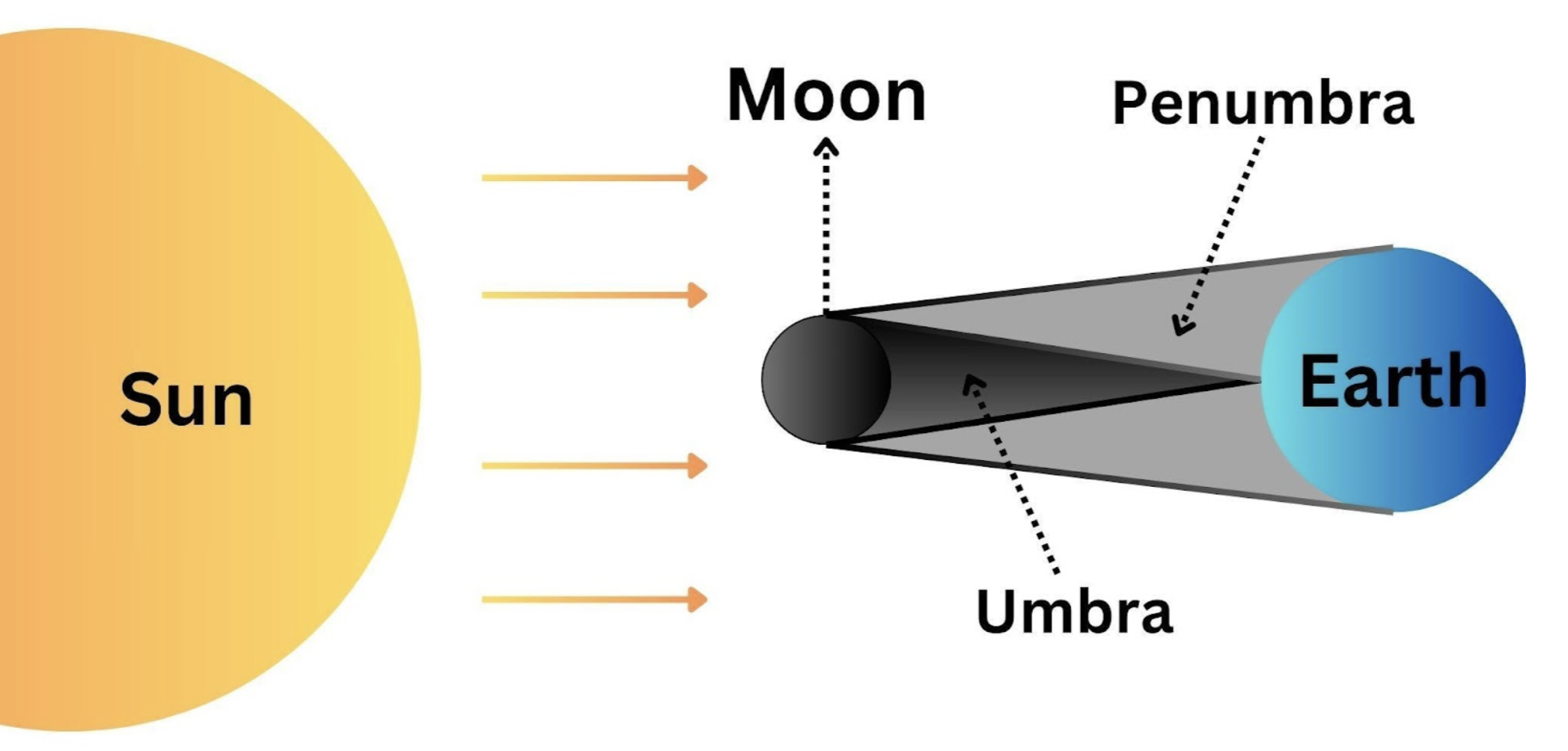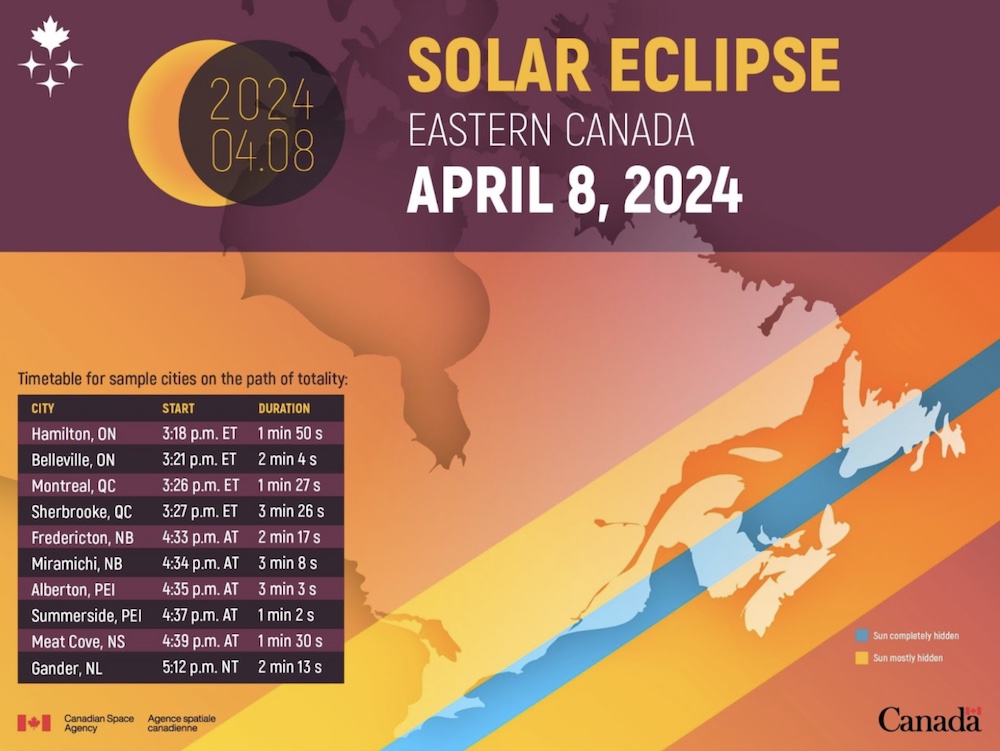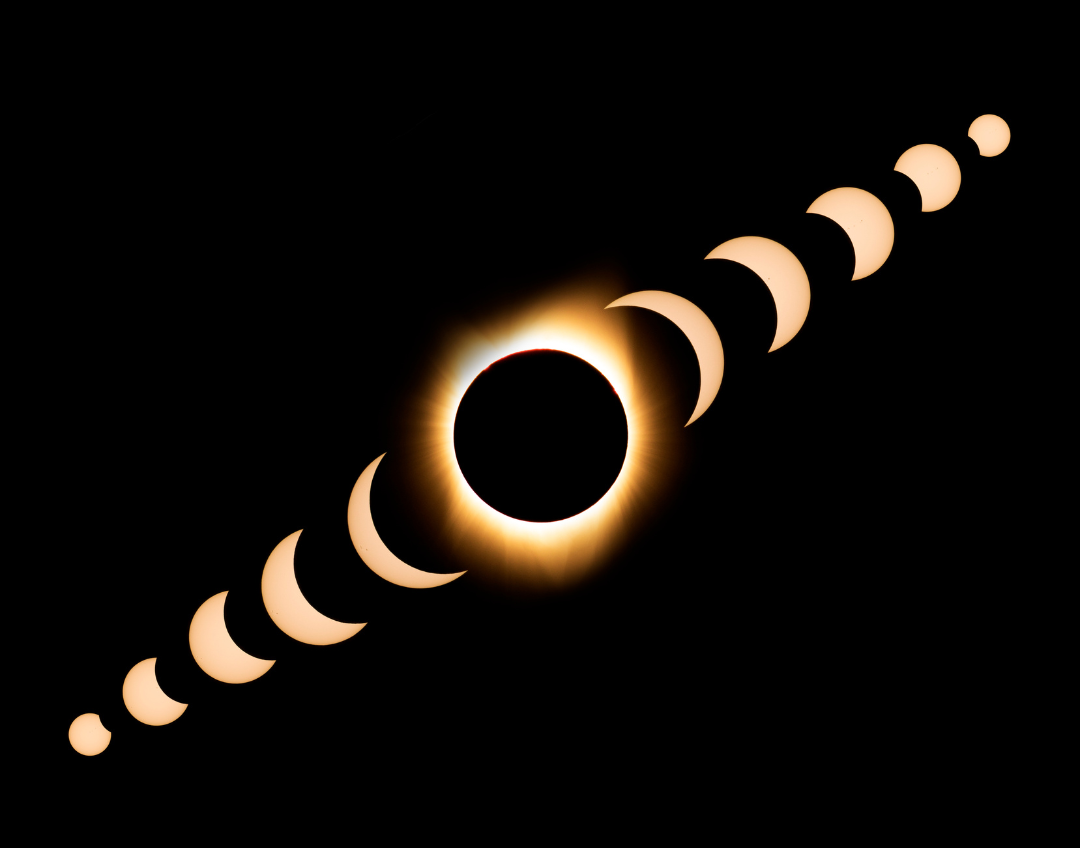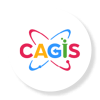
By Parshati Patel, PhD
On April 8th, Canada will be experiencing a solar eclipse! Apart from a small portion of Yukon, Canadians will have a chance to witness either a partial or total solar eclipse.
But what exactly is a solar eclipse?
A solar eclipse occurs when the Moon comes between the Earth and the Sun, blocking Sun’s light and casting a shadow on Earth. The shadow is divided into two parts: an inner shadow, known as the umbra, and an outer shadow, known as the penumbra.
In the umbra, the Sun is completely blocked by the Moon, and those areas on Earth experience a total solar eclipse. As umbra moves across the Earth, it is known as the path of totality. In the penumbra, the Sun is only partially covered by the Moon, and those regions experience a partial solar eclipse.

What makes solar eclipses unique?
A solar eclipse happens about once every 18 months. However, since 71% of Earth is covered by the ocean, the majority of eclipses occur over the water. The path of totality is narrow and the same location on Earth only gets to see the total solar eclipse, on average, every 375 years! This makes the April 8th total solar eclipse rare and the regions that will witness totality include southern Ontario, southern Quebec, and Atlantic Canada.

In addition to its rarity, what’s truly exciting is experiencing the Moon completely blocking the Sun, dipping the regions in darkness for a few minutes! During the April 8th solar eclipse, you can experience up to 4 minutes and 28 seconds of totality, depending on how close you are to the centre of the path of totality.
How can I experience the eclipse?
You can use eclipse2024.org to find the start and end times of the eclipse and determine whether you will experience a partial or total solar eclipse at your location.
It is important to never look directly at the Sun – this can cause permanent eye damage and blindness.
One way to experience the eclipse is with a solar eclipse projector, to project the image of the eclipse onto the back of a box. Do not look directly at the Sun through the hole in the box – you should be facing away from the Sun when you use the projector! You can also use household materials with small holes like colanders, to project the image of the eclipse onto the ground. Again, you should be facing away from the Sun to do this!
If you have specialized ISO 12312-2 certified solar viewers that were obtained from an authorized retailer, you can view the eclipse through those viewers. It is important to inspect these viewers carefully before use; do not use them if you see any imperfections like scratches, dents, bends, punctures, marks, or if the materials are loosening. Do not use viewers that are not ISO 12312-2 certified or that were obtained from an unauthorized retailer. Do not look at the eclipse through sunglasses – they are not certified to look directly at the Sun.
Although you may be tempted to photograph the eclipse, this could damage your eyes and/or your camera’s sensor! Do not film or photograph the eclipse unless you have proper equipment.
With proper safety precautions, whether you are in the path of a partial or total solar eclipse, it will be an amazing opportunity to experience this celestial phenomenon. All that is needed is partly cloudy or clear skies! There are eclipse events happening across the country on April 8th you could join; you can find out more about them here! If the weather does not cooperate where you are, you can always watch the livestream of the eclipse from Texas.
Dr. Parshati Patel is an astrophysicist turned freelance science communicator and educator based in London, Ontario.







